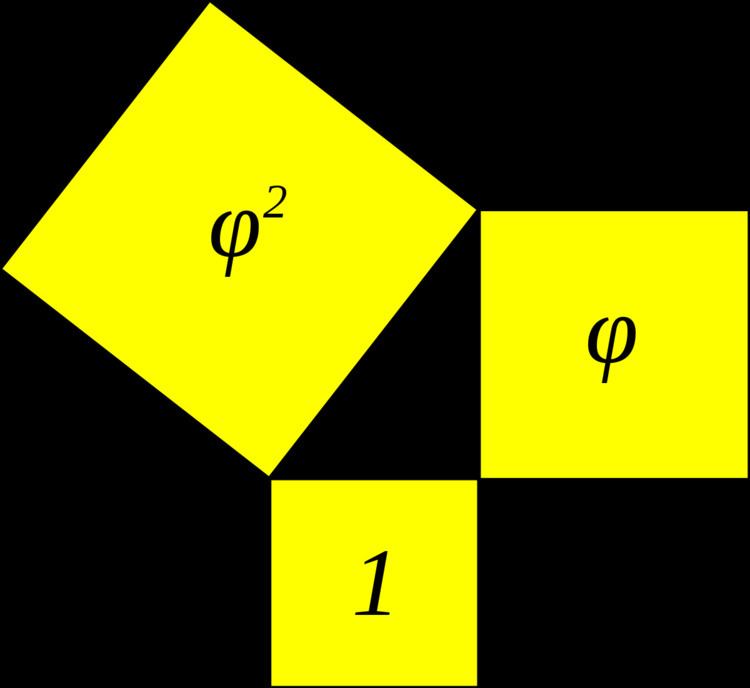 | ||
A Kepler triangle is a right triangle with edge lengths in geometric progression. The ratio of the edges of a Kepler triangle is linked to the golden ratio
Contents
- Derivation
- Relation to arithmetic geometric and harmonic mean
- Constructing a Kepler triangle
- A mathematical coincidence
- References
and can be written:
Triangles with such ratios are named after the German mathematician and astronomer Johannes Kepler (1571–1630), who first demonstrated that this triangle is characterised by a ratio between short side and hypotenuse equal to the golden ratio. Kepler triangles combine two key mathematical concepts—the Pythagorean theorem and the golden ratio—that fascinated Kepler deeply, as he expressed in this quotation:
Geometry has two great treasures: one is the theorem of Pythagoras, the other the division of a line into mean and extreme ratio. The first we may compare to a mass of gold, the second we may call a precious jewel.
Some sources claim that a triangle with dimensions closely approximating a Kepler triangle can be recognized in the Great Pyramid of Giza.
Derivation
The fact that a triangle with edges
into the form of the Pythagorean theorem:
Relation to arithmetic, geometric, and harmonic mean
For positive real numbers a and b, their arithmetic mean, geometric mean, and harmonic mean are the lengths of the sides of a right triangle if and only if that triangle is a Kepler triangle.
Constructing a Kepler triangle
A Kepler triangle can be constructed with only straightedge and compass by first creating a golden rectangle:
- Construct a simple square
- Draw a line from the midpoint of one side of the square to an opposite corner
- Use that line as the radius to draw an arc that defines the height of the rectangle
- Complete the golden rectangle
- Use the longer side of the golden rectangle to draw an arc that intersects the opposite side of the rectangle and defines the hypotenuse of the Kepler triangle
Kepler constructed it differently. In a letter to his former professor Michael Mästlin, he wrote, "If on a line which is divided in extreme and mean ratio one constructs a right angled triangle, such that the right angle is on the perpendicular put at the section point, then the smaller leg will equal the larger segment of the divided line."
A mathematical coincidence
Take any Kepler triangle with sides
Then the perimeters of the square (
This is the mathematical coincidence
According to some sources, Kepler triangles appear in the design of Egyptian pyramids. However, the ancient Egyptians probably did not know the mathematical coincidence involving the number
